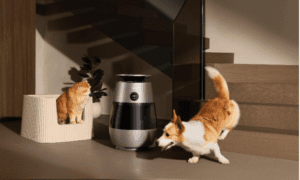I was overwhelmed with frustration last week when I moved to my new property. My newly imported electrical equipment was not working in the new home. I was so stuck in this situation that I was about to sell most of my electrical equipment. But…the problem was not so big. Then, I found that the devices required 50Hz, but our grid supplies 60Hz.
I was feeling defeated at that time. But, I got an amazing solution after a short research. That’s where I discovered the AC converter on GoHz. AC converters, also known as frequency converters, seamlessly transform electrical frequency from one Hz rating to another. These devices enable efficient operation of electrical equipment, regardless of regional frequency differences.
So…are you facing a similar dilemma after relocation or installation of an electricity system? Just follow the footprints of this guide to solve this scenario if it is playing out in your life too.
Let’s dig in!
Converting 60Hz to 50Hz:
Here is a step-by-step procedure on how to convert 60Hz to 50Hz with the help of a frequency converter. But first, you need to understand what 50Hz and 60Hz are.
What is 50Hz, 60Hz?
Alternating Current (AC) works by periodically reversing the direction of electrical flow. This cyclical change is measured in cycles per second. This is known as frequency, expressed in Hertz (Hz). Simply put, 50Hz and 60Hz refer to the number of times the current changes direction each second.
Interestingly, the current reverses direction 100 times per second in the case of 50Hz. On the flip side, 60Hz current changes direction 120 times per second. This frequency variation is very important. This is because different regions and devices rely on either 50Hz or 60Hz to function efficiently and safely.
The power infrastructure of this world really relies heavily on 50Hz and 60Hz frequencies. Some countries, like those in Europe and Asia, are utilizing 50Hz power grids. On the other hand, such as those in the Americas, they operate on 60Hz. However, not all electrical appliances are designed to accommodate both frequencies.
That’s where the compatibility issues start to come to the surface (the same happened to me when I moved to my new place). That’s where Frequency Converters come in and play their part. They are innovative devices that adapt electrical frequencies with ease. Moreover, they enable hassle-free operation of devices across different power grids.
Frequency Converters to Convert 60Hz to 50Hz:
It is said that Frequency Converters offer unparalleled flexibility. How? These devices transform fixed 50Hz or 60Hz AC power into variable frequency and voltage output. They do it through advanced AC-DC-AC conversion technology. Plus, these sophisticated devices produce pure sine wave outputs.
Also, they allow for adjustable frequency and voltage settings to accommodate diverse electrical requirements. Honestly speaking, these are not like variable frequency drives which are specifically designed for motor speed control. Instead, frequency converters provide broader applications. Additionally, they differ from ordinary voltage stabilizers as they offer more comprehensive power conversion capabilities.
The gold standard for AC power supply is characterized by stable frequency and consistent voltage. In addition to that, negligible resistance and a pristine sine wave waveform devoid of distortion are other important characteristics of AC power supply. So, the Frequency Converters closely replicate these ideal characteristics. As a result, they deliver exceptional power quality.
Hence, an increasing number of countries are adopting frequency converter power supplies as the new standard for electrical infrastructure after recognizing their benefits. These frequency converters enable standard appliances to operate at their technical best by providing an optimal power environment. In fact, they are providing reliability, efficiency, and peak performance of these electronic devices.
Now, global compatibility for your home appliances is possible with a versatile frequency converter. This innovative device will perfectly convert:
- Frequency: 60Hz to 50Hz and 50Hz to 60Hz
- Voltage: 110V to 220V
It is the perfect solution for global travelers, expats, or importers. This type of useful device is enough to make sure your appliances work effortlessly worldwide. However, you need to take care of the following considerations above all before jumping into immediately buying any frequency converter.
Important Things to Consider Before Buying Frequency Converters:
In order to convert 60Hz to 50Hz, you need to follow the following considerations and steps to get the desired outcome:
Step 1: Choose the Right Frequency Converter
In the first step, you need to select the correct frequency converter. It is crucial for safe and efficient operation. Consider the following factors:
- Power rating: Match the capacity of your frequency converter to the wattage of your appliance.
- Frequency conversion: It must ensure 60Hz to 50Hz or 50Hz to 60Hz conversion.
- Voltage conversion:It should verify 110V to 220V or other required voltage changes.
- Compatibility: Always check appliance specifications for converter suitability before purchasing it.
- Certifications: You ought to look for safety standards compliance (e.g., UL, CE, ETL).
- Efficiency: Opt for high-efficiency converters to minimize any energy loss.
Thus, you need to be very careful in choosing the right frequency converter. Otherwise, it will be of no use if it’s not even compatible with your home appliances, you can get professional support in choosing the converter on GoHz.
Step 2: Installation of Frequency Converter
Next, you need to install a frequency converter. For this purpose, start by connecting the input cables to the power source and the output cables to the appliance. Next, ground the converter for safety and mount it in a well-ventilated area. Then, secure the cables with strain relief and configure the settings according to the requirements of your appliance.
However, let’s be honest – installing a frequency converter involves electrical work and it is a complex process. So, you should avoid potential risks, electrical shocks, or damage to your appliances. The safest and most recommended approach is to hire a licensed electrician. Their expertise has the right knowledge of a correct and secure installation of frequency converters.
Step 3: Connect Equipment and Test Operation
Have you done the frequency converter installation process? It’s time to connect your equipment and verify everything is working smoothly. Just plug in your appliance to the converter’s output and ensure all connections are secure. Next, turn on the frequency converter and appliance, and monitor the converter’s display (if available) for output voltage and frequency.
After this, verify the appliance functions correctly under normal operating conditions. Also, check for overheating, unusual noises, or erratic behavior. Lastly, a successful test confirms your frequency converter and appliance are working well together. Immediately consult the user manual or contact the manufacturer’s support if you find any issues.
Share your experience with frequency converters in the comments section. Also, share which company offers the best frequency converters.
I hope you have happy appliances!



































